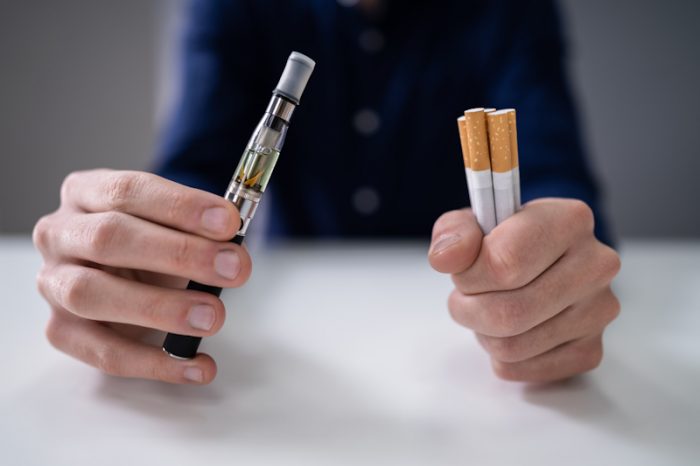Dual Use Myths Debunked by Expert
Some working in public health have warned that dual use of cigarettes and vapes poses risks or acts to prevent smokers quitting, due to their ideological position opposing e-cigarettes and tobacco harm reduction. A recently published research paper has spurred an expert to point out that this position contains nothing but myths that need to be exposed.
 The study was led by a team at the University of Oxford and published in this month’s edition of Addiction journal. The independent academics compared biomarkers (biological molecules found in the blood, saliva or urine) of potential harm “between people switching from smoking combustible cigarettes completely to electronic cigarettes, continuing to smoke, using both electronic cigarettes and combustible cigarettes (dual users) and using neither.”
The study was led by a team at the University of Oxford and published in this month’s edition of Addiction journal. The independent academics compared biomarkers (biological molecules found in the blood, saliva or urine) of potential harm “between people switching from smoking combustible cigarettes completely to electronic cigarettes, continuing to smoke, using both electronic cigarettes and combustible cigarettes (dual users) and using neither.”
What is dual use?
Dual use is excepted by cessation experts as being a common transition phase for many smokers looking to quit.
“Some smokers quit smoking soon after they start vaping. Others take longer and smoke and vape for a period while trying to transition to exclusive vaping,” says Dr Colin Mendelsohn.
Mendelsohn wasn’t part of the research team, but the Australian doctor has worked as a general practitioner for almost 30 years and is widely recognised as a leading expert in smoking cessation. In fact, between 1987 and 1997, Dr Mendelsohn developed and taught “Smokescreen for the 1990s” at the University of New South Wales, a program for GPs to help smokers quit.
The review analysed nine studies of smokers trying to quit and fourteen harmful toxicants in the saliva, blood, and urine of dual users. Levels of thirteen of the toxicants were significantly reduced in dual users compared to smokers, with no difference for one chemical. Reductions were found in nitrosamines, polycyclic aromatic hydrocarbons, mercapturic acids and other known carcinogens.
Dr Mendelsohn commented: “This analysis debunks the claim by vaping opponents that dual use does not reduce harm and may increase it.”
“Dual use is less harmful than exclusive smoking because most dual users who are trying to quit substantially reduce their smoking. Many studies show improvements in health in dual users, such as blood pressure and asthma,” he continued.
The doctor pointed out that rather than being an obstruction to successful quitting, “dual users are more likely to quit smoking than other smokers, especially if vaping daily. Studies have typically found that 20-45% of dual users quit smoking over the next one to two years.”
Dr Mendelsohn said the new study confirms that “toxic chemicals are significantly reduced in dual users (both smoking and vaping) trying to quit, compared to exclusive smoking”.
Currently, it is estimated that 35% of people vaping in Great Britain are dual users but this figure has been declining as they have been scared back to exclusively smoking again. Hopefully this study will encourage current smokers to stick with vaping again.

Comments are closed here.